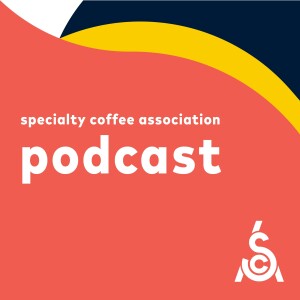
Specialty Coffee Association Podcast
Education

#52: Tracking and Tweaking Your Extraction | Dr. Marco Wellinger | Expo Lectures 2018
 2019-05-20
2019-05-20
Download
Right click and do "save link as"
Today’s lecture explores the different chemical and physical markers that characterize espresso extraction. By using TDS, acidity, caffeine and chlorogenic acids extractions of different grinders, machines and brew ratios can be compared to each other. Recent studies by Dr. Marco Wellinger’s lab have demonstrated that for a given roasted coffee TDS, as measured by a refractometer, correlates well with the content of a range of components in the coffee brew, such as caffeine, chlorogenic acids, and titratable acidity.
Dr. Marco Wellinger is a Q Arabica Grader and research fellow in the group of Chahan Yeretzian at the Institute of Chemistry and Biotechnology at ZHAW Wädenswil in the field of chemistry, technology, and sensory analysis. His fields of research include: instrumental analysis of volatile aroma compounds from coffee (gas chromatography and mass spectrometry), espresso machine and grinder technology as well as sensory analysis of coffee. He was the lead author in the heritage SCAE water chart published in 2016.
Related Links
- Read the full transcript or follow along with the slides on on SCA News: https://scanews.coffee/podcast/52/tracking-and-tweaking-your-extraction-dr-marco-wellinger-expo-lectures-2018/
- Listen to other episodes of the SCA Podcast: https://scanews.coffee/category/podcasts/sca-lectures-podcast/
- Learn more about the upcoming 2019 Lecture Series: https://www.worldofcoffee.org/
Subscribe to this podcast on your favorite app:
- iTunes: www.apple.co/2sXdmSj
- Stitcher: www.bit.ly/2JBJOk8
- Pocket Casts: www.bit.ly/2JBowTT
- RadioPublic: www.bit.ly/2JCfeGY
Table of Contents
0:00 Introduction
2:00 Introduction to the presentation and Dr. Marco Wellinger’s background
7:30 The most important markers that characterize extraction (Total solids, Total Dissolved Solids, Chlorogenic Acids, Caffeine)
11:45 How to apply chemical markers to study extraction
22:00 An exploration of what is espresso, from the point of view of the coffee industry and consumers
26:40 How to combine the brewing control chart with other chemical markers
39:00 Conclusions of these experiments and outlook for Marco’s future experiments
Audience questions
46:30 When plotting out TDS samples by the second, what physical methods did Dr. Wellinger use to gather this data?
47:30 Why did Dr. Wellinger choose calcium carbonate to express acidity in coffee?
49:50 What type of software did Dr. Wellinger choose to express the correlation curves?
50:45 Outro
---
Send in a voice message: https://anchor.fm/specialty-coffee-association-podcast/message
view more
More Episodes
012345678910111213141516171819
Create your
podcast in
minutes
- Full-featured podcast site
- Unlimited storage and bandwidth
- Comprehensive podcast stats
- Distribute to Apple Podcasts, Spotify, and more
- Make money with your podcast
It is Free
- Privacy Policy
- Cookie Policy
- Terms of Use
- Consent Preferences
- Copyright © 2015-2024 Podbean.com





